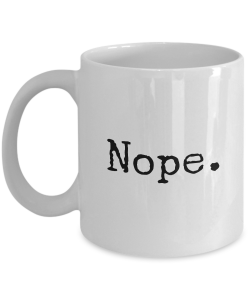Potential clients frequently ask if they can successfully sell or license their patents; unfortunately, the answer is, far more often than not, “no.” Be it a cultural construct of “inventor exceptionalism,” repeated viewing of late-night infomercials by folks who like to tinker, or lazy journalism that elevates human interest stories about successful inventors over a deep explanation of the realities of generating business success, there exists a belief that “if you build a better mousetrap, the world will beat a path to your door.” The truth is that the only person who is guaranteed to make money from a patent is the patent professional that the client hires to get the work done for them.

This topic is on my mind because I had to, once again, give bad news to someone who was expecting to monetize his patent rights that he believed protected an innovative consumer product. In hearing him explain the concept I thought (and you likely would think, too) “wow, why didn’t I think of that?” and “I can’t wait to buy that!” The product clearly solves a long unmet need, and the world may, in fact, beat a path to the door of whomever successfully gets this product to market. But therein lies the rub: who and under what circumstances will this product get to the consumer?
To this end, the potential client, let’s call him “Bob,” has been a working professional in a particular building-related area for many years. His experience gives him unique insight into problems that exist for consumers in this space and, just as importantly, how to meet longstanding needs with functional product solutions. However, Bob has no desire to be in the product business. This means that in order to get the product to market, he must find someone who is willing to do the hard work of both developing the product and creating a market (i.e., finding customers) for the product.
In my experience, the latter is often the hardest aspect of successful product introduction, but both of these efforts require substantial risks to be taken, often with long-odds. If the product folks, let’s call them “Acme,” are successful in developing a strong customer base for an innovative product—which is the whole point of the risk-taking exercise of getting a product to market—invariably, competitors will want a piece of the action. Notably, these competitors would be required to take fewer risks, which means less investment to achieve as good, or even better, financial returns on their investment, if only because these competitors were effectively given a roadmap for success by Acme. The overall negative effects for Acme may even be worse because it may now be competing in a price eroding market, with these lower prices creating fewer profits. If Acme had realized at the start that its expected profit margins would not be achievable, it is possible that its management would not have even entered the market with Bob’s innovation.
Which now brings us back to Bob, his patent, and whether he can extract any value out of his efforts to date, given his lack of desire to be in the product business. We can use an analogy here that aligns with the understandable world of real estate.
Consider a house that is for sale that exhibits considerable flaws: it has a cracked foundation, the kitchen and bathrooms are outdated, and the roof leaks. If the house is in a desirable neighborhood, those problems may be irrelevant to a buyer because the neighborhood will drive a buyer’s decision. But, if the house is in a less desirable location, other factors will drive a buyer’s decision, for example, whether the flawed house can be renovated for a reasonable price to allow the house to drive a next purchaser’s buying decision or whether the neighborhood will be up and coming in the future such that it might make sense to buy the house and hold it for a market upturn. In either of these situations, the buyer’s tolerance for risk is different from that of the person buying in the desirable neighborhood. All things being the same, the latter will likely be willing to pay much more even for a house with significant flaws.
Much in the same way, a buyer of a patent is either “buying because of the neighborhood,” or “buying in anticipation of something good happening in the neighborhood.” In other words, if there is already value in the patent because there is an existing product with customers, the risk of buying that patent (and the attendant business) is markedly less than if there was only a patent that is not aligned with a business today. Moreover, if there is no product in the market to drive value, the “condition” of the patent (e.g., claim scope, attorney competence etc.) will be of more significance because that is what will drive the price paid today for that asset.
For Bob’s innovation, I could see that his concept was potentially a big deal for the relevant consumer but that the patent covered only a small aspect of the value brought to consumers by his concept. Also, unfortunately, the work done by the attorney to protect that aspect was not very competent. Thus, Bob’s patent was both too narrow and too flawed to drive value in a patent licensing or sale context at least because the risks for someone bringing a product to market that was aligned with that patent would be high, which would mean that a price for that patent would be set very low by a potential buyer. In short, I had to tell Bob that it made no sense to attempt to bring the patent to market.
This was tough information to give, but I am happy to say that Bob accepted my assessment with grace and with a learning attitude. The good news is that Bob’s innovative insights can still be leveraged to generate patent protection that is meaningful. This is possible because his patent did not disclose these innovative concepts. Ironically, this means that the weaknesses of Bob’s patent create business strength that can, in turn, be leveraged to generate valuable patent protection that aligns with that business strength.
After our call, Bob is no longer a “potential client,”–he is an actual client. We plan to generate a series of patent filings that allows him to protect the value obtainable from his innovative thinking. The focus of our patenting efforts will be on the unmet customer needs solved by his insights, as opposed to products that can be defined. Moreover, we will endeavor to hire competent patent people to execute on our patent strategy to make it more likely that Bob will obtain patent protection that will survive patent due diligence with value intact.
Bob and his team now understand that the goal is not to get a patent, but to get a patent that covers customer solutions that are embodied in functional products. This means that he and his team will also be working on generating customers for his innovative product concepts while the patents are being obtained on an accelerated basis. I look forward to reporting to you in a year or so that Bob has not only obtained broad patent protection, but that he is also in conversations with a licensee or buyer for his innovative and well-protected product(s) to which customers are flocking.


